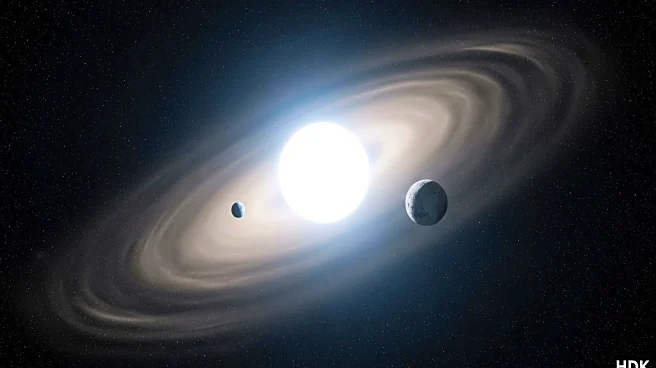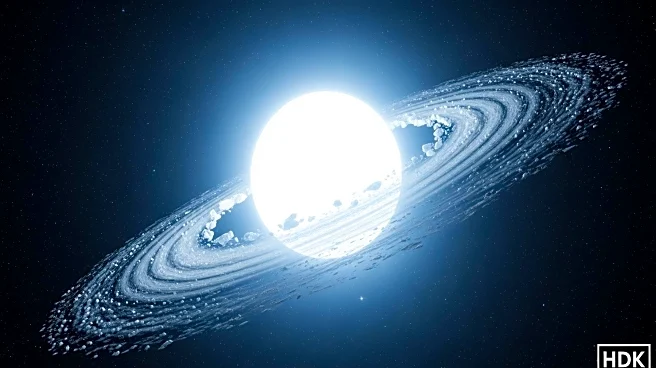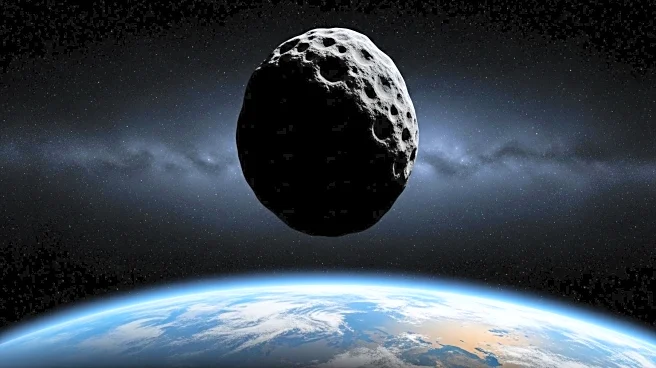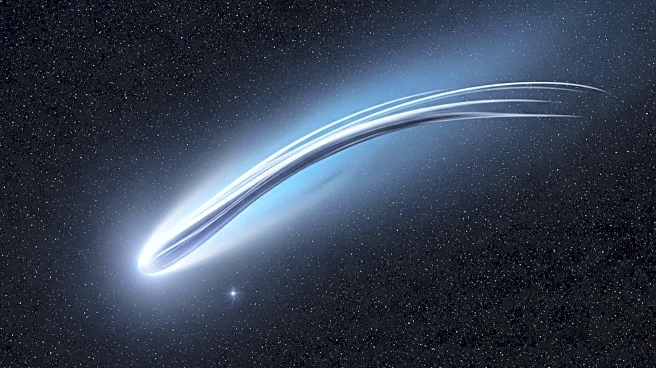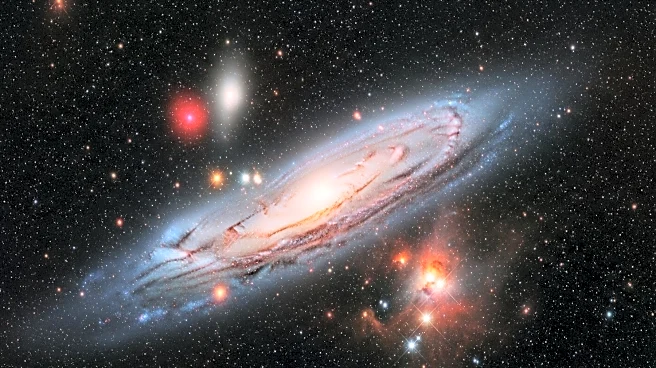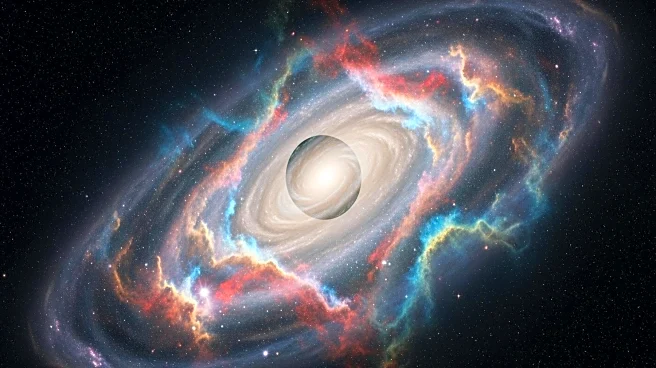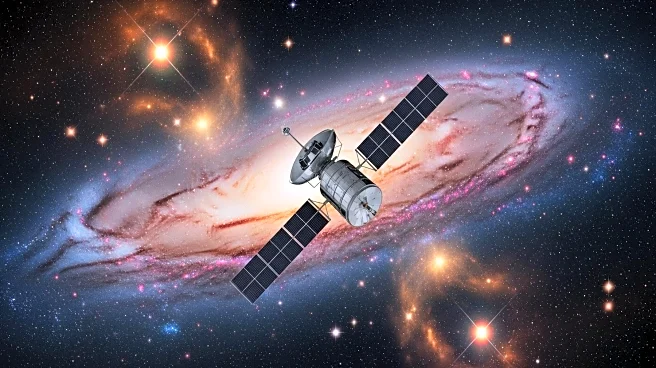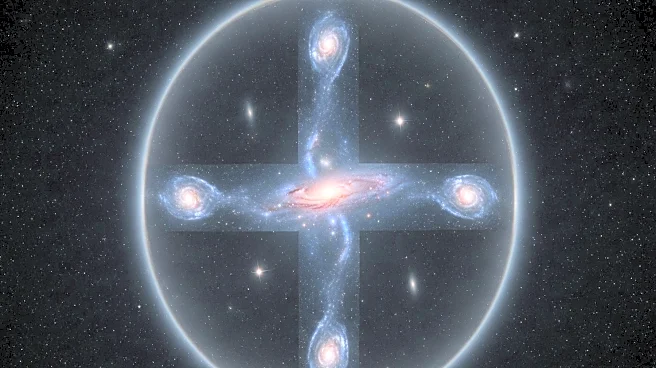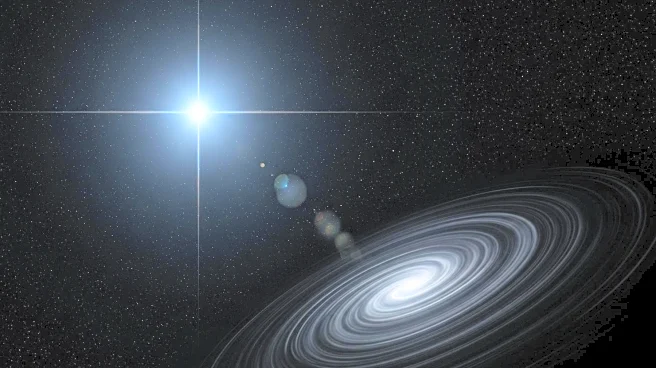What's Happening?
NASA's Hubble Space Telescope has made a significant discovery by observing a white dwarf star consuming a fragment of a Pluto-like object in a nearby stellar neighborhood. This observation was made possible due to Hubble's unique ultraviolet capabilities. The white dwarf, which is about half the mass of the Sun, is pulling in and tearing apart an icy object from its system's Kuiper Belt analog. The chemical composition of the object, including high levels of water ice and nitrogen, suggests it may be a fragment of an exo-Pluto. This discovery provides insights into the volatile-rich accretion events in white dwarfs.
Why It's Important?
The discovery is crucial for understanding the composition and frequency of volatile-rich accretion events in white dwarfs, which can offer insights into planet formation and the delivery of water to rocky planets. The findings also provide a glimpse into the future of our solar system, as similar events may occur when the Sun becomes a white dwarf. The research could help scientists better understand the building blocks of planets and the evolution of planetary systems.
What's Next?
The research team plans to use NASA's James Webb Space Telescope to further study the molecular features of volatiles such as water vapor and carbonates in infrared light. This will help in understanding the frequency and composition of these accretion events. The team is also following the discovery of the interstellar comet 3I/ATLAS to learn more about its chemical composition, which could provide additional insights into planet formation.

